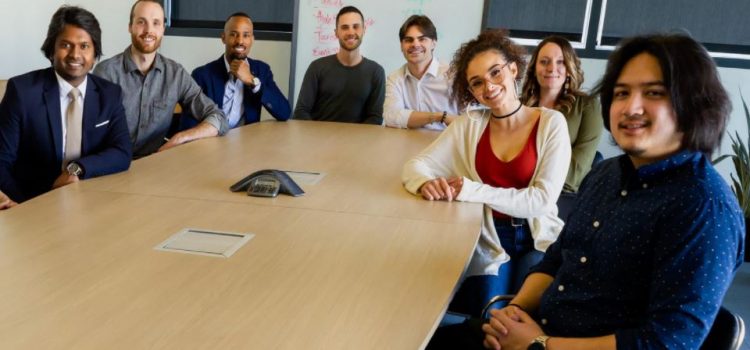

This article is an excerpt from the Shortform book guide to "Range" by David J. Epstein. Shortform has the world's best summaries and analyses of books you should be reading.
Like this article? Sign up for a free trial here .
How can organizations benefit from having employees with a wide range of experience? Why are teams made up of specialists prone to mistakes?
In his book Range, David Epstein argues that organizations should hire employees from varied and diverse backgrounds rather than specialists. This is because specialists tend to have narrow points of view whereas generalists tend to be more innovative and broad-thinking.
Keep reading to learn why your organization should hire generalists.
Organizations Benefit From Range
The book Range by David Epstein spends a good amount of time discussing the benefits of hiring generalists in organizations. Just as the most versatile individuals have accumulated a wide range of experience, Epstein argues that the most robust organizations cultivate a wide range of perspectives.
The Conformity of Specialist Organizations
In the same way narrow-minded specialists assume their area of expertise applies to everything, narrow-minded organizations make the mistake of assuming that all problems can be solved in the same way.
To support this argument, Epstein draws heavily on an analysis of the 1986 Challenger space shuttle explosion. He argues that this disaster was due to NASA’s over-reliance on a single guiding principle, specifically, to ignore unreliable human intuition and make decisions based on objective quantitative data.
This principle is a good one—human intuition is sometimes dead wrong, and when it’s your job to build rockets, the idea that you would trust a gut instinct instead of data from rigorous testing is laughable. However, Epstein argues that this guiding principle didn’t fit the situation at hand.
The engineers were aware of a malfunctioning seal in the rocket’s booster and suspected that it was related to low air temperature. They made reasonable judgments based on a photo of the rocket’s interior—there was more soot on the wall after a cold day’s test launch than on a warm one, indicating that the cold was hardening their sealant, causing a leak. Unfortunately, since all they had were photos, with no conclusive data linking cold temperature to failure, the higher-ups at NASA felt the engineers’ argument wasn’t strong enough to justify canceling the launch.
Even though the engineers’ logic made perfect sense, NASA employees were in the habit of ignoring reason without data. In Epstein’s eyes, relying on a single solution for a problem it couldn’t solve is what caused the disaster.
| An Alternative Lesson From the Challenger Explosion In Think Like a Rocket Scientist, NASA scientist-turned-lawyer Ozal Varol offers an alternative takeaway from the Challenger disaster. Both the Challenger and the similar 2003 Columbia explosion were preceded by a series of successful test flights, giving the teams at NASA unwarranted confidence in the safety of the next flight, despite evidence to the contrary. Every success makes us more likely to take bigger risks and make careless mistakes. One study showed that successful financial analysts become overconfident, ironically making their future predictions less accurate than someone with a less successful track record. Varol points out the principal logical fallacy at work here—just because a system functioned correctly doesn’t mean that every part of that system functioned correctly. Additionally, just because a strategy worked doesn’t mean it’s infallible, or even the best strategy available. People are far less likely to dissect what they did wrong after a success than a failure, even though it’s unlikely that they did everything perfectly. After beating the odds and landing a man on the moon, NASA began to grow complacent. NASA engineers were so confident, they neglected to include an escape system for the crew of the Challenger, resulting in seven deaths. Its “quality assurance” team was cut from around 1,700 to 505 from 1970 to 1986. Success made them reckless. We should learn from this: pay attention to the parts of your successes that go wrong, and try to objectively evaluate each decision you make. |
The Benefits of Balanced Ideals
In contrast, the best organizations embrace the idea that there’s no one solution to every problem.
Epstein notes that it’s common advice for managers to foster “congruence” by aligning their organizations under a single guiding principle. This is based on the idea that mixed messages within an organization lead to confusion and counterproductivity. For example, a manager who tells his team to exercise more autonomy but refuses to stop micromanaging everyone is creating an unreliable, contradictory organization. This certainly isn’t healthy.
However, Epstein argues that organizations built around a single core value are likely to get stuck in one way of thinking. Instead, organizations, as well as the individuals within them, should strive to achieve the seemingly impossible task of embodying multiple conflicting ideals at once.
For example, one common conflict that many organizations struggle to balance is between protocol and intuition, as we saw happen at NASA. Both of these elements are valuable to a certain degree, and Epstein argues that organizations need to recognize this, even if it means embracing contradiction. Conflicting values put a healthy pressure on team members to question their own decisions and learn from their mistakes.
| How Ray Dalio Resolves the Conflict of Ideals In Principles, hedge fund manager Ray Dalio describes a unique way that he was able to balance trust in the organization and individual intuition at his company, Bridgewater. He describes a hybrid form of management that allows for either protocol or individual judgment to reign depending on the specific situation: “Believability-Weighted Decision-Making.”Anyone is allowed to make a suggestion or weigh in on a decision at Bridgewater. But the influence each person has on the eventual outcome depends on their believability. Dalio breaks this quality down into two parts—someone who is “believable” has 1) a proven track record of success with this type of problem, and 2) the ability to logically articulate the rationale behind their opinion. When groups of employees are asked to vote on a given decision, their votes are mathematically weighted according to their believability. This strategy prevents teams from becoming slaves to protocol, as any serious challenge to the protocol must be considered. The strategy is also protected from the biases of human intuition, as illogical and unproven arguments are devalued by default. Dalio’s decision-making process is proof that it’s possible to reconcile conflicting values with an elegant, non-contradictory solution. |

———End of Preview———
Like what you just read? Read the rest of the world's best book summary and analysis of David J. Epstein's "Range" at Shortform .
Here's what you'll find in our full Range summary :
- Why it's better to be proficient in a range of skills rather than becoming a specialist in one
- Why you're never “too late” to pursue something you’re interested in
- Why the nontraditional background of a generalist gives them an edge






